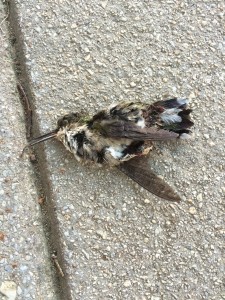A small town in Japan, after realizing that incineration was harmful for the environment and their health, the installed an intense recycling program. By 2020 they want to be completely trash free.
Author Archives: Teresita Galarce Crain
Passages
“They are not even faintly shy. They are everywhere, in treetops and on the ground. Their song reminds me of a child’s neighborhood rallying cry — ee-ock-ee — with a heartfelt warble at the end. But it is their call that is especially endearing. The towhee had the brass and grace to call, simply and clearly, “tweet.” I know of no other bird that stoops to literal tweeting”(Dillard 252).
“A kind of nothing is what I wish to accomplish, a singleminded trek towards that place where ant shutter left open to the zenith at night will record the wheeling of all the sky’s stars as a pattern of perfect, concentric circles. I seek a reduction, a shedding, a sloughing off”(Dillard 255).
“But to me the most mysterious thing about the universe is not its comprehensibility but the fact that it exists. And the same mystery attaches to everything within it. The world is permeated through and through by mystery. By the incomprehensible… But this knowledge adds not much to our understanding of things. “Knowledge is power,”… But power does not lead to wisdom, even less to understanding… This blather about mystery is probably no more than a confession of intellectual laziness”(Abbey 51).
“I respect vultures myself, even like them, I guess, in a way, and fully expect someday to join them, internally at least. One should plan one’s reincarnation with care. I like especially the idea of floating among the clouds all day, seldom stirring a feather, meditating in whatever it is that vultures meditate about. It looks like a good life, from down here” (Abbey 53).
Turkey Thicket?
I live in a place called Turkey Thicket in DC. Apparently, according to my neighbor whose family has lived in the area for centuries, it used to be a huge breeding ground for the gobblers. However, in the 17 years that my family has lived there we have only had one interaction with a wild turkey. Now all you can find about the “thicket” is that they recently built a recreation center and a playground.
https://www.google.com/maps/place/Turkey+Thicket+Playground/@38.9389025,-76.9936344,16.98z/data=!4m2!3m1!1s0x0:0xedd10ebe5d4ee677
I found this interesting in comparison to Sterba when he talked about the issue of novelty to nuisance. He says “Wildlife biologists were surprised by how easily turkeys adapted to people… they became habituated to feeding near homes and lost their fear of people, sometimes becoming aggressive” (156). The turkey I saw was definitely one of the skittish ones It ran away from me and all of the people that stopped to look it. I remember being surprised at how fast the fat bird could go and how aggressive my neighbors got in wanting the turkey out of their yard. To them it was a nuisance, a threat to their gardens, as if the turkey would cause more damage than the squirrels, possums, raccoons, and deer already had. It was confusing to see them bat it away when I knew that this was their home as well. After reading Sterbas chapter I realized that the turkey I saw, sometime in the 2000’s, was probably a direct result of the conservation efforts.
Movies
I have noticed that during class movies are referenced a fair amount and tie into conversations that we are having. I am sure all of you enjoy watching movies and I wanted to compile a list of a few of my favorite movies that have to look specifically at the environment, nature, and human interaction with the wild. There are many movies that address this but here are just a few.
Documentaries:
- 180 North
- The No Impact Man (leading to the No Impact Project http://noimpactproject.org/)
- King Corn
- Tapped
- Fast Food Nation
- Grizzly Man
- Food, Inc.
- Forks Over Knives
- An Inconvenient Truth
- Six Degrees Could Change the World
- Moving Art Series (Desserts, Oceans, Forests)
- Disney Earth
- BBC Planet Earth
Other (non-docs)
- Into the Wild
- A River Runs Through It
- Stand By Me
- O Brother Where Art Thou?
- Happy Feet
- Brother Bear
- Casablanca
- The Wind That Shakes the Barley
- Apocalypse Now
- Once Upon A Time In The West
- Promised Land
- The Way Back
- The Mission
- Wall-E
- Princess Mononoke
Check them out if you are interested and if you have any questions please feel free to ask me.
Interesting Passages – The White Heron
“They were going away from the western light, and striking deep into the dark woods, but their feet were familiar with the path, and it was no matter whether their eyes could see it or not” (1200).
“She was not often in the woods so late as this, and it made her feel as if she were a part of the gray shadows and the moving leaves” (1201).
“The tree seemed to lengthen itself as she went up, and to reach farther and farther upward. It was like a great main-mast to the voyaging earth; it must truly have been amazed that morning through all its ponderous frame as it felt this determined spark of human spirit creeping and climbing from higher branch to branch. Who knows how steadily the least twigs held themselves to advantage this light, weak creature on her way! The old pine must have loved his new dependent. More than all the hawks, and bats, and moths, and even the sweet-voiced thrushes, was the brave, beating heart of the solitary gray-eyed child. And the tree stood still and held away the winds that June morning while the dawn grew bright in the east” (1205).
Tree Tour
Aaron and I had a lot of fun walking around campus to identify trees.
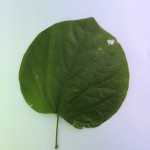
Our first tree was out in the back of the library. We were unable to detect what tree this was from as the app couldn’t tell us much, but we are pretty sure it was the same leaf that Professor Brandes showed us in class, the Eastern Redbud. We noted that on the handout with all of the trees marked out that this Redbud was missing from the list and concluded that it was probably because it was a new tree.
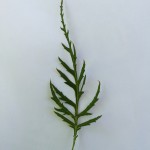
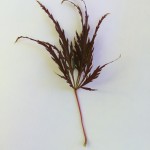
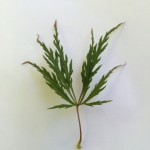
After looking at the Redbud we made a b-line to the famous Japanese Maples behind Colton. Aaron was particularly interested in the trees that were insured on campus. This tree was particularly hard to identify. At first we tried using a single spoke of the leaf with no avail. We realized our mistake and tried using a whole leaf that fell on the ground. However, this leave was red and mangled which also yielded no results. Finally, we picked a leaf off the tree that was flat and green. Then the app was able to identify the type of tree.
Our last tree was outside of Kirby Hall and we are pretty sure it is a Black Locust that we identified by the seeds.
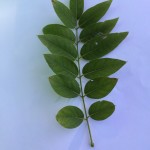
Listening to Nature
I came across an article the other day about megaphones for mother nature. Somewhere in the forrest in Estonia there are giant funnels that are open to the public.
http://thecreatorsproject.vice.com/blog/giant-wooden-megaphones-amplify-the-sounds-of-a-forest
This reminded me of something similar. Apparently a man wants to record every sound on earth to show the ‘soundscapes’ of life on earth.
http://www.theverge.com/2014/8/28/6071399/scientists-are-recording-the-sound-of-the-whole-planet
Tallamy Quotes
“Plants are not optional on this planet. With a few exceptions, neither we, nor anything else, can live without them. We invariably take plants and the benefits they provide for granted. Who takes time to think that the oxygen in each breath we take has been produced exclusively by plants? Who is grateful for the forests when we are blessed with the rains that provide the fresh water we all require, water that is filtered clean by the tangled mass of roots it flows through en route to the nearest stream” (15)?
I am reminded of the issue of clean water, “clean” water is highly sought after today. Many water companies advertise that their water is clean and from the purest place on earth, whether it be from Fiji or from the “clearest” springs, when in reality the water in the bottles are full of chemicals and un-natural things.
“We are losing our birds because we have taken away their homes and their food and filled their world with dangerous obstacles that take a terrible toll” (30).
There is one thing that I want to highlight about this quote that may not be what Tallamy was trying to get at but I think it important nonetheless. Obviously Tallamy is referencing the loss of birds, which, as a birdwatcher, I find very important, yet he also hints at humans entering their world. As humans I think we all fall into the trap of thinking that Earth is our world, when, in reality, it is not. This goes with my next quote:
“Our impact on every square mile of the earth’s biosphere, that thin zone on the planets surface in which the conditions for life are ideal, has been so great that we must give up the old notion if preserving nature in its pristine form. That however, does not mean that we must give up in nature altogether. Nature’s living components – its 9 million or so species of plants and animals – are, for the most part, still with us, although most species are in a desperate struggle to adapt to the changes we impose on their environment daily” (32).
We impose on their environment.
Collaboration is key but in order to obtain any sliver of alliance we need to first have recognition that this world, this big hunk of life spinning through space that we call home, is not only our home. We must recognize that because we have called this place home and saw some sort of claim to the land, we have also pushed out the other beings, plants and animals alike. We have pushed them out of their home, we have caused species to go extinct. I sound pessimistic when in reality I am optimistic. Like Tallamay I think that we have to desperately adapt to the changing environment around us. And like seeking clean water, we must abandon some notions of nature we have and change our view on the Earth.
Hummingbird
Walking back from class the other day I looked down and saw this hummingbird on the sidewalk. Seeing this bird dead on the sidewalk sparked an interesting conversation between my friend Alex, a fellow bird enthusiast, and I. Hummingbirds are interesting birds. They have one of the highest metabolisms out of all animal and have to be constantly eating in order not to die. Hummingbirds eat so much yet they are always only hours away from death if they do not eat. They can often die out of exhaustion, when they are not in their hibernation state called torpor. Alex and I wondered if this bird died because of a lack of food or if it rammed into the windows of Hugel. Hummingbirds are extremely intelligent birds therefore the food option seemed most likely.
This got me thinking of the habitability of our campus for hummingbirds or animals in general. We have a lot of green on campus, our trees and lawns, yet I feel that there needs to be more flowers and gardens. At home the National Wildlife Federation recognized us as a “Backyard Habitat” for transforming our yard into a habitat for butterflies, bees, birds, and insects. The steps are not hard nor tedious and are clearly laid out on the Federations website: nwf.org.
I wonder if there was any way we could start an initiative to make our campus more habitable for animals, especially the pollinating birds and insects.
Meta Post – Trespassing
We set aside two and a half hours for our trip. From the start I was in the mindset of exploring and wasn’t bothered by the fact that Aaron and I had to find our location. We were dropped off in the wrong location and realized after the car left that our location wasn’t in a walkable location. I knew the general direction of the factory but not exactly. It was on the west side of the river and we were on the east side. The only thing separating Aaron and I to the Pigment Plant was the river and another factory. Not wanting to trespass too much we decided to find another way across the river. We walked along the road and found a trail that seemed to lead down to the river, we went down the trail on a whim. Thankfully it lead right to the river but then we had to find a way across. At first we tried walking up and down the bank to find some cluster of rocks that would serve as a bridge across, however nature does not work like that and there was no clear way across. Determined to cross the river I somehow convinced Aaron to cross right on the top of the dam ignoring the many signs that told us not to.
I did not expect the water to be as deep as it was crossing the damn but we were already half way across. Upon reaching the other side with our shoes soaking wet we found two paths, one to a building and one up a hill towards a tower. The path down to the building just led towards people we knew would get mad at us for being on their property so we turned around and tried path number two. The second path lead to another building even bigger than the fist one but we wanted to get further in. We left the path and walked through the woods to a large rock formation to get a better vantage point. Climbing over rocks, fallen trees, and thick brush we made it to a fence that marked the end of our journey. We set aside two hours for our trip, I didn’t think it would take that long but looking at my watch when we got back, we took three hours.

